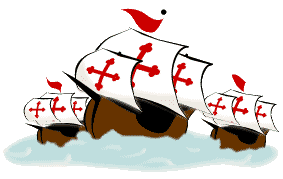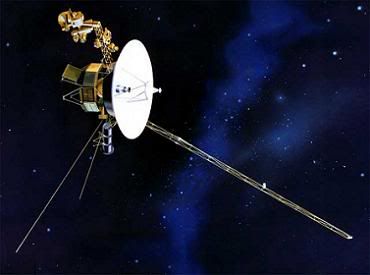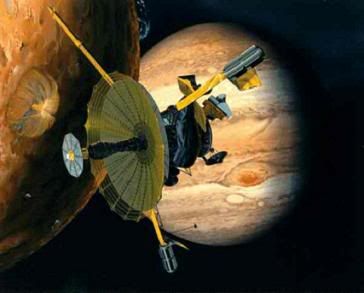Post by glactus on Jun 14, 2011 1:38:14 GMT
It all started 500 years ago. The journey of mankind into the unknown. Three little ships, The Nina, the Pinta and the Santa Maria.

The Nina, the Pinta and the Santa Maria
The voyages of Columbus initiated European exploration and colonization of the American continents, and are thus of great significance in world history. He made four voyages to the Americas, with his first in 1492, which resulted in what is widely referred to as the Discovery of America.

The Voyager 2 Spacecraft
Most of what we know of our outer Solar System has been learned in the last 30 years beginning with the Pioneer and Voyager missions of the 1970's to Jupiter and beyond and a staggering amount has been learned in those tree decades, some of it more fascinating and complex than had ever been foreseen.
Theories of planetary evolution and behavior have been revised again and again in the face of hard data returned by the scientific instruments of Solar System exploration. In the summer of 1980 Voyager 2 did a flyby of Neptune, the first spacecraft to do so 12 years after it was launched.

Galileo at Jupiter
The Galileo spacecrat launched in 1980 was the first outer Solar System orbiter going into orbit around Jupiter in 1995 to begin extensive study of the planet, and released the first ever probe into the atmosphere of another Planet,

Cassini at Saturn
The Cassini spacecraft was launched in.1997 and spent 7 years to reach the planet. On January 14 th 2005 Cassini launched the Huygens probe which entered the atmosphere of Titan, Saturn's largest moon and parachuted to the surface, radioing scientific observations back to Cassini for relay to Earth.
As did Columbus all those centuries ago when journeying into the unknown, these spacecraft have made a wonderful contribution in exploring the Solar System, helping us to gather essential data, vital for any manned missions, to understand the past and prepare for the future - our journey to the stars.

Looking at Jupiter
Credits: These are NASA/Hubble images
Text by Wikipedia/Glactus
Telescope in avatar Meade 16" LX 200

The Nina, the Pinta and the Santa Maria
The voyages of Columbus initiated European exploration and colonization of the American continents, and are thus of great significance in world history. He made four voyages to the Americas, with his first in 1492, which resulted in what is widely referred to as the Discovery of America.

The Voyager 2 Spacecraft
Most of what we know of our outer Solar System has been learned in the last 30 years beginning with the Pioneer and Voyager missions of the 1970's to Jupiter and beyond and a staggering amount has been learned in those tree decades, some of it more fascinating and complex than had ever been foreseen.
Theories of planetary evolution and behavior have been revised again and again in the face of hard data returned by the scientific instruments of Solar System exploration. In the summer of 1980 Voyager 2 did a flyby of Neptune, the first spacecraft to do so 12 years after it was launched.

Galileo at Jupiter
The Galileo spacecrat launched in 1980 was the first outer Solar System orbiter going into orbit around Jupiter in 1995 to begin extensive study of the planet, and released the first ever probe into the atmosphere of another Planet,

Cassini at Saturn
The Cassini spacecraft was launched in.1997 and spent 7 years to reach the planet. On January 14 th 2005 Cassini launched the Huygens probe which entered the atmosphere of Titan, Saturn's largest moon and parachuted to the surface, radioing scientific observations back to Cassini for relay to Earth.
As did Columbus all those centuries ago when journeying into the unknown, these spacecraft have made a wonderful contribution in exploring the Solar System, helping us to gather essential data, vital for any manned missions, to understand the past and prepare for the future - our journey to the stars.
Looking at Jupiter
Credits: These are NASA/Hubble images
Text by Wikipedia/Glactus
Telescope in avatar Meade 16" LX 200


